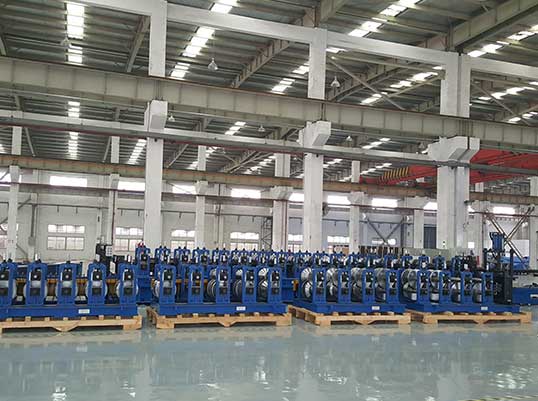Navigation Menu
Contact Us
- Email:
- info@wxavatar.com
- Address:
- Yurong Village, Yuqi Street, Huishan District, Wuxi, China.
Release Date:Oct 26, 2024 Visit:170 Source:ZCM Roll Forming Machine
The solar stand roll forming industry has undergone significant transformations in recent years, driven by a relentless pursuit of innovation. These advancements have not only improved the efficiency and quality of solar stand production but have also broadened the range of applications and design possibilities. In this article, we will explore some of the key innovations in solar stand roll forming processes that have shaped the industry's evolution.

One of the most notable innovations is the integration of advanced automation technology into roll forming machines. Traditional roll forming processes often relied heavily on manual operations and human intervention. However, modern machines are increasingly equipped with automated systems that can handle tasks such as material feeding, roll adjustment, and product ejection with minimal human input. This automation not only reduces labor costs but also enhances precision and consistency in the production process.
Another key innovation is the development of multi-axis roll forming machines. These machines can form complex shapes and profiles in a single pass, eliminating the need for multiple operations and reducing production time. Multi-axis roll forming machines are particularly advantageous for producing solar stands with intricate designs and features, such as curved or angled legs, which would be difficult or impossible to achieve with traditional methods.
The integration of sensors and real-time monitoring systems has also been a significant innovation in solar stand roll forming processes. These systems provide manufacturers with valuable data on machine performance, material flow, and product quality. By analyzing this data, manufacturers can identify inefficiencies, optimize production parameters, and reduce waste. Additionally, real-time monitoring allows for quicker troubleshooting and maintenance, minimizing downtime and ensuring continuous production.
Material advancements have played a crucial role in the innovation of solar stand roll forming processes. New materials, such as high-strength steels and aluminum alloys, offer improved durability and corrosion resistance, making them ideal for outdoor applications like solar stands. The development of these materials has led to the creation of new roll forming processes that can handle these materials effectively, ensuring high-quality finished products.
The use of computer-aided design (CAD) and computer-aided manufacturing (CAM) software has revolutionized the design and production of solar stands. These software tools allow manufacturers to create detailed designs, simulate roll forming processes, and generate precise machine settings. This digital workflow not only enhances product design capabilities but also reduces the risk of errors and inconsistencies during production.
In addition to these innovations, manufacturers are increasingly adopting lean manufacturing principles to optimize their solar stand roll forming processes. Lean manufacturing focuses on eliminating waste, improving efficiency, and enhancing customer satisfaction. By applying these principles, manufacturers can streamline their production processes, reduce costs, and improve product quality.
Finally, the development of modular roll forming systems has provided manufacturers with greater flexibility and versatility. These systems allow for quick and easy changes in roll sets, enabling manufacturers to produce a variety of solar stand designs and sizes without significant downtime or retooling costs. Modular systems are particularly beneficial for manufacturers that need to adapt to changing market demands or customer requirements.

In conclusion, the solar stand roll forming industry has seen significant innovations in recent years, driven by advancements in automation, multi-axis forming, sensor integration, material science, digital design, lean manufacturing, and modular systems. These innovations have not only improved the efficiency and quality of solar stand production but have also expanded the range of design possibilities and applications. As manufacturers continue to explore new technologies and methods, the solar stand roll forming industry is poised for even greater advancements in the future.